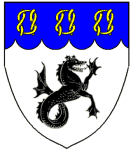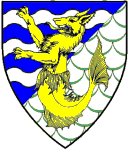| View previous topic :: View next topic |
| Author |
Message |
CatyMae n Steve
Joined: 18 Jun 2005
Posts: 838
City/Region: Jefferson, OR
State or Province: OR
C-Dory Year: 2006
C-Dory Model: 22 Cruiser
Vessel Name: CatyMae
Photos: CatyMae
|
 Posted: Tue May 15, 2007 12:23 pm Post subject: Posted: Tue May 15, 2007 12:23 pm Post subject: |
 |
|
OVERwhelmed is an UNDERstatement  Sounds like a job for Sportcraft Marina to me! Sounds like a job for Sportcraft Marina to me!
Thank you!
Caty |
|
| Back to top |
|
 |
Sea Angel
Joined: 29 Dec 2003
Posts: 736
City/Region: Virginia Beach, VA
State or Province: VA
Photos: Sea Angel
|
 Posted: Tue May 15, 2007 7:01 pm Post subject: Posted: Tue May 15, 2007 7:01 pm Post subject: |
 |
|
Great explanation, Don.  
_________________
Art ka1rx
CBRAT #208
2005 CD25 #075 SEA ANGEL (SOLD)
USCGAUX (RET), USN(RET)
Broadcast TV ENG(RET)
ka1rx@verizon.net
SKYPE: Art.Bartlett4 |
|
| Back to top |
|
 |
thataway
Joined: 02 Nov 2003
Posts: 20810
City/Region: Pensacola
State or Province: FL
C-Dory Year: 2007
C-Dory Model: 25 Cruiser
Vessel Name: thataway
Photos: Thataway
|
 Posted: Tue May 15, 2007 7:43 pm Post subject: Posted: Tue May 15, 2007 7:43 pm Post subject: |
 |
|
I certainly agree if you are going to do it, do it correctly. 10 years ago when we were cruising Alaska and BC there were a number of marinas which still only had 110 V straight blade 15 amp and 20 amp twist lock circuits.
It is possiable to wire in a battery charger, with a two pole circut breaker (on both hot and neutral, never on ground). I would personally put in a galvanic isolator on the ground (but my CD 25 does not have a galvanic isolator, yet). There are inexpensive 15 amp circuit polarity testers, and every boater which does not have a reverse polarity tester, should own one to test a circuit before plugging in. http://www.keenzo.com/showproduct.asp?ID=38016
I find a number of both RV and marina circuits which are miss-wired. The tester has three lights which show if the circuit is correctly polarized and if there is a ground defect.
The battery charger is hard wired to a breaker, with no GFI on the vast majority of boats. The two breaker approach gives protection and "off" on both the hot and neutral wires.
I want all circuits to be Ground fault protected on a boat--not just those near water--because the entire environment is wet and potentially conductive.
Then there is the question of a battery charger, when there is no power on the boat. The only kind I will use is the epoxy potted chargers--Guest makes some 6 and 10 amp ones. These can be used with the heavy duty cords--as Joe suggests. It is rare that one can find the proper duty cord already assembled. But it is possiable to buy the appropiate wire, with adequate protection and insullation, and assemble his own cord. The plug of the battery charger must be kept in an absolutely dry location.
For a proper installation, one needs the water proof connector. In the smaller boats which are trailer kept there are 3 prong 15 amp connectors (best put under a gunnel where it is less likely to have corrosion). Promariner makes such a connection. Many small boats just use the plug, with no other connection, escept hard wiring the battery charger. I would favor a double breaker between the plug and charger, with a galvanic isolator.
Of course with the larger in the water boats, the full pannel, with double breaker on the primary input (30 amp) with the waterproof (so they say) connector on the cabin side and pannel with a breaker on each sub set is essential, along with the reverse polarity indicator.
However even with these precautions, one of the most common causes of boat fires, is at the 110 volt 30 amp electrical twist lock plug. The blades of the plug become carbonized by both corrosion and working of the blades, and minor arcing. This leads to increased resistance and heat. Heat melts the plastic blocks, causing deformity and eventually enough heat to cause a fire. Check the input terminal at least every 6 months. If the blades or socket become black or there is any distortion of the plug or recpitical plug, replace both the socket and the plug with the blades. Unfortunetly many of our boats are made with the "Flip down the lid" plugs on the boat. The better ones are screw on cover, (captive) with a rubber gasket. One can occasionally spray the blades with an anti corrosive and avoid many of the above problems. I will be replacing the plastic flip down the lid units this year, with the more expensvie metal, screw type covers this year.
One of my "pet peeves" is that many marinas do not have positive connections with the barrel screw connector around the outside of the plug, and this allows your plug to work in the connector on the pedistal. I always have a 6 foot piece of line which I can wrap around the pedistal to assure that these plugs are not pulled out.
_________________
Bob Austin
Thataway
Thataway (Ex Seaweed) 2007 25 C Dory May 2018 to Oct. 2021
Thisaway 2006 22' CDory November 2011 to May 2018
Caracal 18 140 Suzuki 2007 to present
Thataway TomCat 255 150 Suzukis June 2006 thru August 2011
C Pelican; 1992, 22 Cruiser, 2002 thru 2006
Frequent Sea; 2003 C D 25, 2007 thru 2009
KA6PKB
Home port: Pensacola FL |
|
| Back to top |
|
 |
Sea Wolf
Joined: 01 Nov 2003
Posts: 8650
City/Region: Redding
State or Province: CA
C-Dory Year: 1987
C-Dory Model: 22 Cruiser
Vessel Name: Sea Wolf
Photos: Sea Wolf
|
 Posted: Wed May 16, 2007 12:53 am Post subject: Posted: Wed May 16, 2007 12:53 am Post subject: |
 |
|
One of the things I often have to look up when making my own dock cords and plug converters is the position of the hot, common, and ground wire in the various plug configurations. (Second box below.)
West Marine has the following diagram on page 433 of it's 2007 catalogue plus much more of this type of information on 433 and 434.

_________________
Sea Wolf, C-Brat #31
Lake Shasta, California
  
"Most of my money I spent on boats and women. The rest I squandered'. " -Annonymous |
|
| Back to top |
|
 |
thataway
Joined: 02 Nov 2003
Posts: 20810
City/Region: Pensacola
State or Province: FL
C-Dory Year: 2007
C-Dory Model: 25 Cruiser
Vessel Name: thataway
Photos: Thataway
|
 Posted: Wed May 16, 2007 1:03 pm Post subject: Posted: Wed May 16, 2007 1:03 pm Post subject: |
 |
|
Thanks for posting the blade styles. The Marinco plugs are color coded on the screws--green, silver and black. The very confusing part is when you go to 50 amps, and 220. Fortunately this does not involve C Dories.
There are two completely different 50 amp systems--and I have adaptors for both, since there are a few places in Florida where one might end up which only have 50 amps available to you. (For example some nearby boats may take two of the 30's (very common set up on medium sized boats to have two 30 amp inputs) and the 15 amp is not enough power.
Unfortunately some of these 50 amp adaptors cost several hundred dollars. I found mine at consignment shops. |
|
| Back to top |
|
 |
|
|
You cannot post new topics in this forum
You cannot reply to topics in this forum
You cannot edit your posts in this forum
You cannot delete your posts in this forum
You cannot vote in polls in this forum
You cannot attach files in this forum
You cannot download files in this forum
|
|

 Search
Search Private Messages
Private Messages Profile
Profile Log in
Log in Register
Register Help
Help





